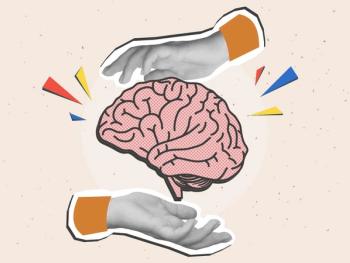
- Psychiatric Times Vol 27 No 6
- Volume 27
- Issue 6
Dramatology: A New Paradigm for Psychiatry and Psychotherapy
Dramatology approaches human encounters, events, and scenes as dramatic enactments of characters in conflict and crisis.
My patient, Gwen, a 69-year-old office worker, sometimes made me wonder if I was conducting psychotherapy or engaging in combat. I had been seeing Gwen for 10 years, after she had been through 35 years of group and individual therapy and had numerous trials of various medications. Gwen suffered from recurrent depression and anxiety and had a history of alcohol abuse and self-mutilation. Typically, she would arrive at our sessions with memorized speeches filled with dramatic depictions of current calamities and crises, accompanied by florid descriptions of aches and pains in various parts of her body. Gwen often acted seductively in our sessions, expressing sexual and romantic feelings for me and the wish to shower me with gifts.
If all this sounds a bit histrionic, you are on the right track. In fact, Gwen provides us with a window into what I have termed “dramatology”-a paradigm for understanding not only important aspects of life but also many psychiatric disorders and their treatment.1 I’ll return to Gwen shortly-but first, I need to lay the foundation for understanding my approach to treatment.
“All the world’s a stage”
Human existence means living with others and expressing oneself in action, specifically, interaction with others. Communication-with or without words-is the most essential human interaction; indeed, it ensures both individual and social survival. Consider the bond between mother and child. It progresses from bodily contact and communion through the other 4 senses to communication with words. In the process, the infant learns language and love-the foundation for all future interpersonal relationships, including the psychotherapeutic relationship.2-4
Communications are made simultaneously to oneself, as intrapersonal (intrapsychic), or to another person (interpersonal), silently or vocally. Dramatology holds that symptoms, including psychiatric symptoms, are also communications conveyed-through words, posture, tone of voice, and movements of the face and limbs. Indeed, symptoms may be understood as messages sent by one person and received by another.5,6
What’s the connection between psychiatric symptoms and drama? Drama (from the Greek root dran, to act) is a composition adapted for enactment by actors on stage. Through gesture, mimicry, costume, and scenery, drama tells a story through action and dialogue. Life is the wellspring of drama and drama imitates life. Shakespeare’s “All the world’s a stage / And all the men and women merely players” does not abolish the difference between fictional and real-life dramas-it merely underscores their shared focus. In real life, we express emotions and ideas in words. And, at all times, we embody or enact these emotions and ideas; that is, we dramatize them.
Freud’s Copernican revolution was that hysteria is historia-her story or his story. Breuer and Freud7(p7) held that “hysterics suffer mainly from reminiscences [authors’ italics].” The hysteric person’s memories of distressing and traumatic-and thus, dramatic-events and encounters are enacted in a variety of inner experiences and overt actions. It is a widespread misconception that Freud was expunged from DSM-IV to make it scientific. In truth, Freud lives on in conversion, somatization, and somatoform disorders.
In DSM-IV, conversion disorder (CD) symptoms are referred to as “pseudoneurological” and CD criteria require that “psychological factors be associated with the onset and exacerbation of” CD. From the perspective of dramatology, conversion symptoms constitute psychological and social communicative conduct. In this view, hysterical paralysis is neither a genuine paralysis nor a pseudoparalysis. It is no paralysis at all; rather, it is an embodied metaphor. In essence, the hysteric person is someone impersonating a genuine paralytic person-and also frequenting medical and psychiatric emergency departments, inpatient and outpatient services, and private offices.
Dramatology approaches human encounters, events, and scenes as dramatic enactments of characters in conflict and crisis. Dramatology comprises 2 forms: dramatization in thought and dramatization in action. Dramatization in thought involves images and scenes lived in dreams, daydreams, and fantasy scenarios. These are accessible in therapy through spontaneous memories and free association. Dramatization in action involves real-life scenes and situations of love and hate, faithfulness and adultery, ambition and apathy, triumph and de-feat, despair and hope, and living and dying.
Dramatology also sees the psychiatrist-patient encounter in a unique light. Harry Stack Sullivan differentiated between the clinician’s observation of the medical patient and the participant’s observation of the psychiatric patient.8 Dramatology goes further: it sees psychiatric treatment not just as observation but as actual participation in the psatient’s real-life drama. Specifically, the patient’s dramatization in action calls for here-and-now confrontations, as we shall see in my encounters with Gwen.
CASE VIGNETTE
Gwen was the eldest child of a prim and proper mother, who died of multiple sclerosis, and a father who was loud, vulgar, and adulterous. Gwen’s brother was born when she was 2; she was 8 when her congenitally deformed and mentally retarded sister was born. Her mother “fattened up” Gwen and gave her enemas until she was 15. Gwen remained emotionally tied to her parents until they died. Her father was pathologically curious about Gwen’s sex life, and he beat her brother with a belt, sometimes dragging him across the room. Her brother-who used to call Gwen “a whale”-tore the head off her favorite doll, tortured insects, drowned Gwen’s kitten, and eventually was given a diagnosis of schizophrenia. He apparently died of starvation. Her sister, shortly after birth, slipped from Gwen’s hands onto the floor, causing Gwen lifelong guilt. In our first session, I said to Gwen, “You had a childhood holocaust.”
Gwen grew up compliant and submissive, clinging to relatives, friends, employers, and doctors. She continually tried to wrest love from others through ingratiation and compulsive altruism (eg, by giving gifts, alms, and food to the homeless), alternating with bursts of rage and passive-aggressive manipulations. Gwen never married and had multiple affairs with sickly, old married men, whom she fantasized rescuing from their infirmities and impotence. Sometimes Gwen engaged in fleeting lesbian encounters, which led nowhere. She often felt as if she were “in a black hole, making myself act crazy so as not to show up my crazy family.”
Since age 8, Gwen had an imaginary companion, which she described as “a fetus, enclosed in half an almond-shaped shell in my stomach-a healthy child to compensate mother for my sister.” This imagined scenario produced another fantasy: being split into “good Gwen” and “bad Gwen” and “living trapped in a plastic bubble.” This splitting of self, she indicated to me, was insurance against “making mistakes or being angry. It was the bad Gwen’s fault. If you knew the real Gwen, you would love me. This way no one can hurt me or abandon me.” In the course of free association, Gwen dramatized “birthing sessions,” complete with screaming, with “the wet fetus leaving my body and soul forever.” These fantasies were Gwen’s “big secret” and inhibited her ability to focus on what people were saying to her. She had to “burst the bubble” to reconnect with the world. Often, in our sessions, Gwen complained of “dizziness,” which spontaneous association revealed as unverbalized anger.
Once, at the start of a session, Gwen showed me a 1975 US government telegram about her brother’s death. She then pointed to the flowers on my table, and the following (reconstructed) dialogue ensued:
Gwen: Where did you get those lovely daisies?
Dr Lothane: These are not daisies, these are chrysanthemums.
G: No, they are not!
Dr L: You are insulting my veracity! [my voice deliberately raised]
G: You sound like my mother, she would take it personally.
Dr L: Why do you insist that these are daisies?
G: The best defense is a good offense. Of course, I knew these were chrysanthemums.
This mundane interchange illustrates dramatic therapeutic participation, with my voice raised for emphasis. Gwen defended against the pain of anger at her mother and brother. She also defended against anger with herself, for having wasted so much of her life, unable verbally to challenge her parents, her brother,or her previous therapist. Gwen also harbored anger at me for not having cured her yet. As in many similar, previous instances, Gwen’s behavior was infuriatingly perverse-deliberately denying the truth of her perception by calling my flowers daisies. She needed to be confronted over her talking without thinking-a habit that repeatedly got her into trouble with people.
In my work with patients like Gwen, I combine confrontation with “reality coaching,” which works on both a cognitive and an emotional level. I teach patients social skills and psychological self-regulation. Eventually, Gwen was able to give up dependence on all her medications; dispense with her defensive maneuvers; accept herself as she is, be more in touch with herself “in the moment,” and be more direct and forthright in communicating with people.
In her own assessment of our work, Gwen wrote: “Dr Lothane uses humor and confrontation to let you reveal yourself. He sees through lies and self-deception. He always listens with the ‘third ear.’ He allows me to be aggressive and angry, to wish him dead out loud. He can talk in psychotic language and understands before I do what makes me tick.”
Conclusion
Pluralistic psychiatry views psychotherapy as an indispensable treatment method.9 Of course, we need DSM-type diagnoses to communicate with colleagues, to present at scientific meetings, and to file insurance claims. In contrast, dramatology represents a paradigm shift, a new synthesis, and a novel therapeutic technique. Dramatology transcends narrative description, diagnostic categories, and dynamics based on formulas. It approaches the 2 participants-doctor and patient-not as abstractions or generalities but as unique individuals in all their “aliveness”: in their dress, age, speech, culture, physical features, and capacity both to love and to be loved.
In dramatic interactions, patient and doctor are drawn into conscious and unconscious enactments that take both persons by surprise and offer considerable heuristic and healing value. Such enactments also transcend transference and countertransference: they pose no danger if both participants adequately process the therapeutic encounter and keep faith with principles of ethics and mutual responsibility. In the drama of the therapeutic encounter, patient and doctor work in tandem: in search of love, justice, and truth.
References:
1. Lothane Z. Dramatology in life, disorder, and psychoanalytic therapy: a further contribution to interpersonal psychoanalysis. Int Forum Psychoanal. 2009;18:135-148.
2. Lothane Z. Freud and the interpersonal. Int Forum Psychoanal. 1997;6:175-184.
3. Lothane Z. The power of the spoken word in life, psychiatry, and psychoanalysis: a contribution to interpersonal psychoanalysis. Am J Psychoanal. 2007;67:260-274.
4. Lothane Z. The uses of humor in life, neurosis, and in psychotherapy. Int Forum Psychoanal. 2008;17:180-188, 232-239.
5. Ruesch J. Therapeutic Communication. New York: Norton; 1961.
6. Szasz TS. The Myth of Mental Illness: Foundations of a Theory of Personal Conduct. New York: Hoeber-Harper; 1961.
7. Breuer J, Freud S. Studies on Hysteria. Vol 2. Standard ed. London: Hogarth Press; 1955.
8. Havens L. Participant Observation: The Psychotherapy Schools in Action. Northvale, NJ: Aronson; 1976.
9. Pies R.The good psychiatry does: a brief review. Psychiatric Times. February 2010.
Additional reading
Brissett D, Edgley C, eds. Life as Theater: A Dramaturgical Sourcebook. Chicago: Aldine; 1975.
Engel GL. Psychological Development in Health and Disease. Philadelphia: Saunders; 1962.
Freud S. The neuro-psychoses of defence. In: The Standard Edition of the Complete Psychological Works of Sigmund Freud (1893-1899). Vol 3. London: Hogarth Press/Institute of Psycho-Analysis; 1986:41-61.
Lothane Z. Confrontations: clinical applications. In: Nichols MP, Paolino TJ, eds. Basic Techniques of Psychoanalytic Psychotherapy. New York: Gardner Press; 1986:207-236.
Articles in this issue
over 15 years ago
Ethics, Psychiatry, and End-of-Life Issuesover 15 years ago
Psychiatry in the Era of Neuroethicsover 15 years ago
Ethics and Child and Adolescent Psychiatryover 15 years ago
The Garden of Eden Poemover 15 years ago
DEA e-Prescribing Rules Present Challengesover 15 years ago
The Interface Between Cancer and Psychiatryover 15 years ago
Risk of Recurrent Breast Cancer With SSRI/Tamoxifen Interactionover 15 years ago
Elegant Knockdowns, DISC1, and Schizophreniaover 15 years ago
The Challenges of Treating Youths With Bipolar DisorderNewsletter
Receive trusted psychiatric news, expert analysis, and clinical insights — subscribe today to support your practice and your patients.













